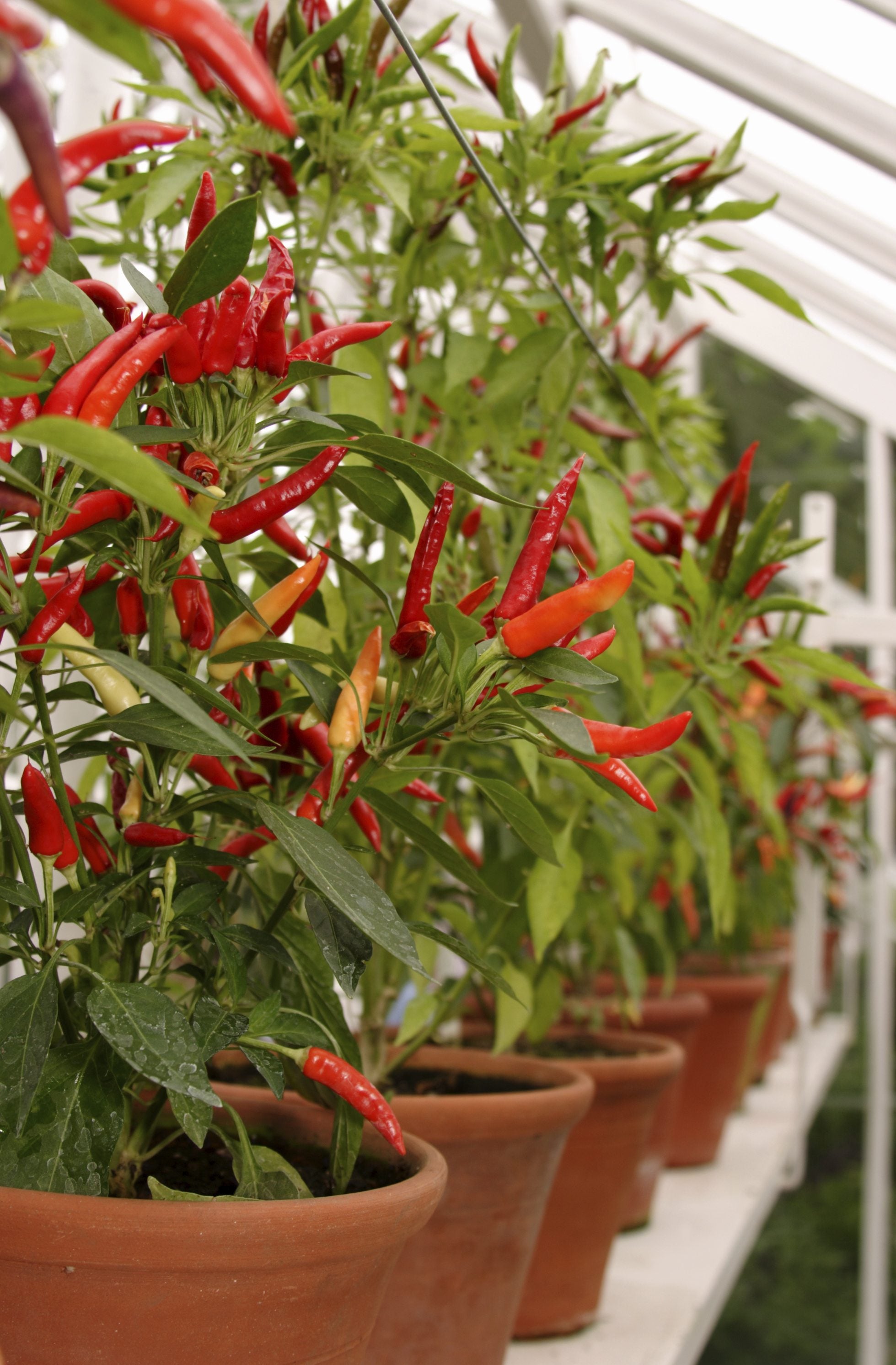Growing Peppers In Planters: How To Grow Pepper Plants In A Container


Peppers, especially chili peppers, hold a special place in many gardens. These vibrant and delicious vegetables are fun to grow and can also be decorative. Just because you don't have a garden to grow peppers doesn't mean that you can't grow them. Growing peppers in planters is easy. Plus, when you grow peppers in pots, they can double as decorative plants on your patio or balcony.
Growing Peppers in Containers
Container garden peppers need two important things: water and light. These two things will determine where you will grow pepper plants in a container. First, your peppers will need five or more hours of direct sunlight. The more light they can get, the better they will grow. Second, your pepper plant is entirely dependent on you for water, so make sure that your container growing pepper plant is located somewhere that you will be able to easily get water to it on a daily basis. When planting your pepper plant into the container, use organic, rich potting soil; don't use regular garden soil. Regular garden soil can compact and harm the roots while potting soil will stay aerated, giving the roots room to grow well. As mentioned, a pepper plant will need to get nearly all of its water from you. Because the roots of a pepper plant cannot spread out into the soil to look for water (like they would if they were in the ground), the plants need to be watered frequently. You can expect to water your pepper plant in a container at least once a day when the temperature is above 65 F. (18 C.) and twice a day when the temperatures rise above 80 F. (27 C.) Pepper plants are self-pollinating, so they don't technically need pollinators to help them set fruit, but pollinators can help the plant set more fruit than it normally would. If you're growing peppers in planters in a location that could be difficult for bees and other pollinators to get to, like a high balcony or an enclosed porch, you may want to try hand pollinating your pepper plants. This can be done one of two ways. First, you can give each pepper plant a gentle shake a few times a day while it is in bloom. This helps the pollen distribute itself to the plant. The other is to use a small paint brush and swirl it inside each open blossom. Container garden peppers can be fertilized with compost tea or a slow release fertilizer once a month. Growing peppers in containers can be fun, and makes these tasty vegetables available to many gardeners who don't have a traditional, in-the-ground garden.
Gardening tips, videos, info and more delivered right to your inbox!
Sign up for the Gardening Know How newsletter today and receive a free copy of our e-book "How to Grow Delicious Tomatoes".

Heather Rhoades founded Gardening Know How in 2007. She holds degrees from Cleveland State University and Northern Kentucky University. She is an avid gardener with a passion for community, and is a recipient of the Master Gardeners of Ohio Lifetime Achievement Award.
-
 4 Superfast Composting Methods: Turn Waste Into Garden Gold In 30 Days Or Less
4 Superfast Composting Methods: Turn Waste Into Garden Gold In 30 Days Or LessTry the fastest composting methods to turbocharge your pile and transform kitchen scraps and garden waste into finished compost in just a few weeks.
By Mary Ellen Ellis
-
 Best Spider Plant Soil – Complete Soil Guide And Expert Tips For Keeping Plants Happy
Best Spider Plant Soil – Complete Soil Guide And Expert Tips For Keeping Plants HappySpider plants are fun and easy plants to grow, but what is the best soil for a spider plant? Selecting the right soil is important so they can thrive.
By Bonnie L. Grant